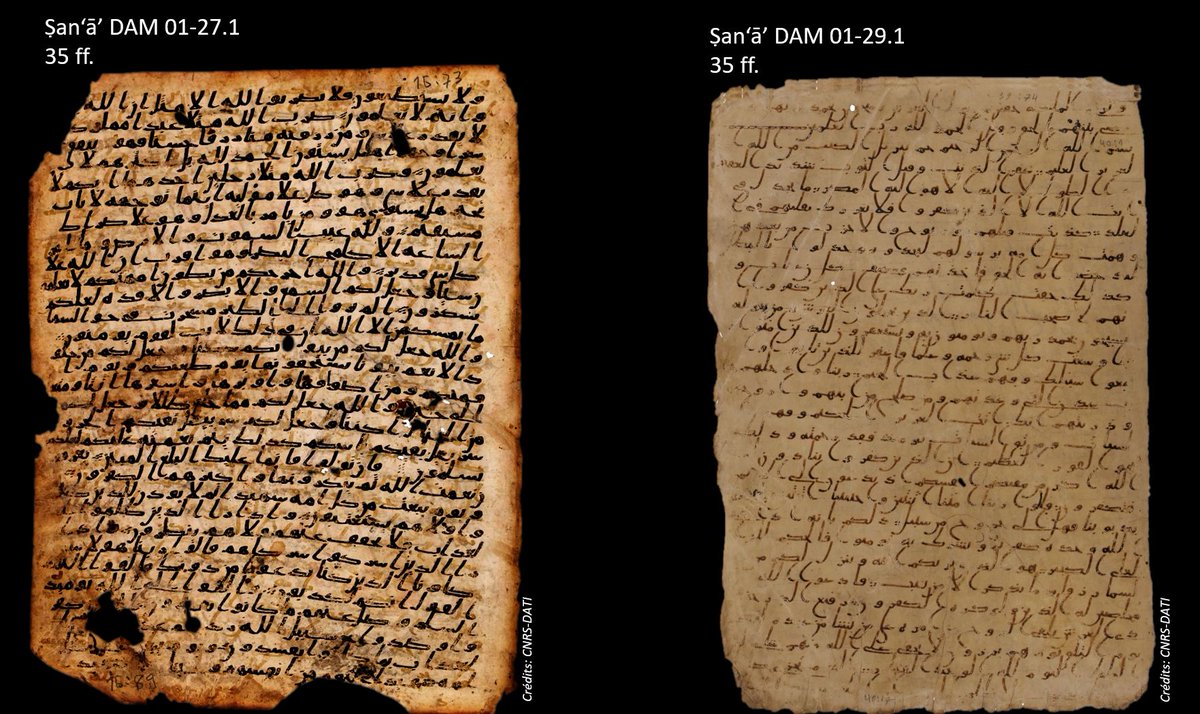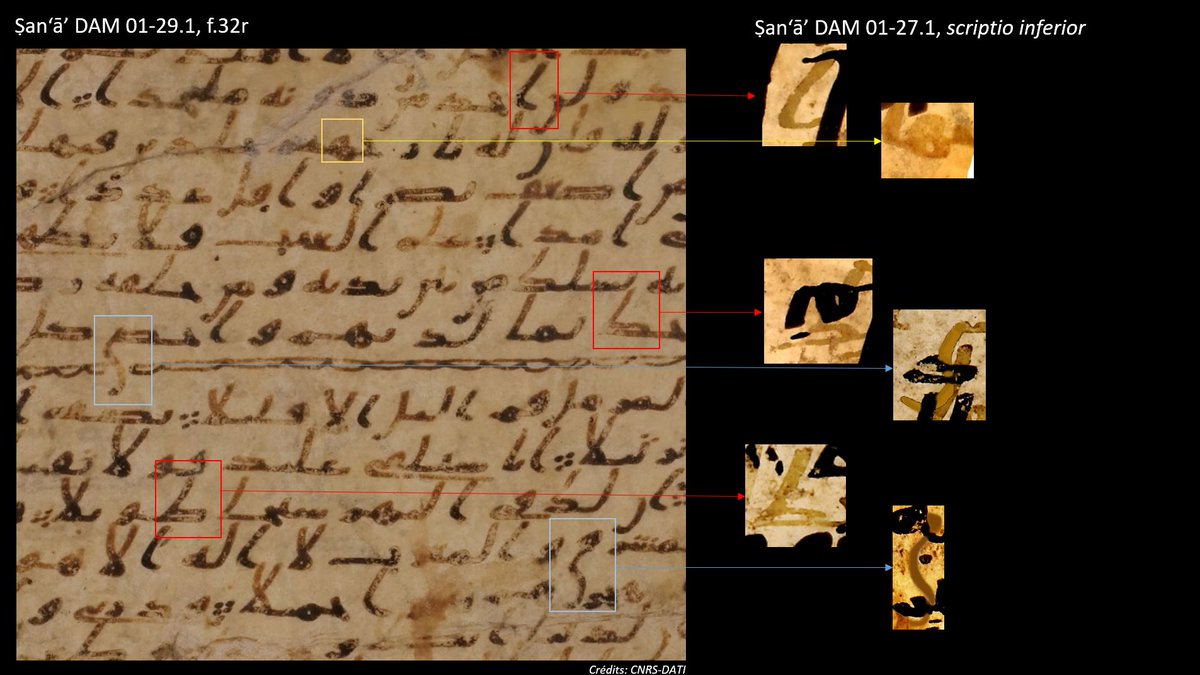Thread. Ṣan‘ā’ DAM 01.29-1
1/12. We know today dozens of very early Qur’āns. All of them have only slight consonantal variants and follow the same order of the sūras (identical to our current edition). There are very few exception, the most famous one is the Ṣan‘ā’ palimpsest.
1/12. We know today dozens of very early Qur’āns. All of them have only slight consonantal variants and follow the same order of the sūras (identical to our current edition). There are very few exception, the most famous one is the Ṣan‘ā’ palimpsest.
2/12. For now, the Ṣan‘ā’ palimpsest is very difficult to understand, because it is an isolated witness. But another ms, DAM 01-29.1, could help in our understanding of the palimpsest and shed light on its connection to ‘Uthmanic text.
3/12. DAM 01-29.1 is indeed related to the palimpsest in various ways. They came from the same deposit. Materially speaking, both are quite similar: almost same size and codex’s structure, same layout. Script styles of 01-29.1 are close to the under script of the palimpsest.
4/12. As the palimpsest (01-27.1) and one other "hijazi" ms (01-25.1), DAM 01-29.1 was part of the research project DATI. It has been integrally digitalized and two samples of parchment leaves have been subject to physical and chemical analyses, included C14 (by 2 different lab).
5/12. DAM 01-29.1 is very complex to study. First because of its bad condition : only 35 fragments of leaves, they contain some 26% of the Qur’ān text. But the leaves are isolated, running from sūra Q.2 to Q.90, with important lacunae.
6/12. How old is it ? We obtained C14 results from 2 lab, but only the first one published the results. In any rate, they agree for dating 1 of the 2 samples (f.13) from the first half of the 7th century. But the writing of the text could also happen in the following decades.
7/12. C14 gave different dating for the 2 leaves. These are also written by 2 different copyists. And DAM 01-29.1 gathers much more than 2 copyists. I identified at least 15 copyists ! That& #39;s an important issue: do all of these leaves belong to one same original manuscript?
8/12. The text of DAM 01-29.1 clearly belongs to the & #39;Uthmanic tradition. In addition to the common consonantal variants, such as missing alif for long /a/, we find more rare variants, closer to the palimpsest ones, like addition of words, or inversions
9/12. But let’s have a look at the sūras’ order. It is similar to the ‘Uthmanic text in 24 attested transitions. But on f.33, we find an anomaly: after Q.80, a portion of text has been erased and rewritten afterwards, then there is Q.81.
10/12. According to my reconstruction, it was first Q.75. Strangely, after its erasure, someone else added again the same sūra Q.75. Why? Maybe one had to add Q.75 somewhere and it was the only remaining free space in the codex. But if you have another idea, please share it!
11/12. In any event, that kind of variants is known in the Islamic sources as features of the codices of Ibn Mas’ūd or Ubayy, Muḥammad’s Companions. Interestingly, in these codices, Q.80 and Q.81 were not consecutive. Between both sūras, there was a group of sūras, included Q.75
12/12. In my paper, I attributed DAM 01-29.1 to the ‘Uthmanic tradition "with cases of contamination from another recension". I would be more cautious today and wait for a deeper text study and comparison with the Ṣan‘ā’ palimpsest for shedding light on that crucial issue.
For illustrating this thread, I reused the powerpoint I made for my lecture at AIBL. So, sorry for the French titles!
And if you want to know more about this : https://www.academia.edu/38824798/_Un_nouveau_t%C3%A9moignage_sur_la_fixation_du_canon_coranique_dans_les_d%C3%A9buts_de_lIslam_le_manuscrit_%E1%B9%A2an_%C4%81_DAM_01-29.1_in_CRAI_2018-II_avril_2020">https://www.academia.edu/38824798/...
And if you want to know more about this : https://www.academia.edu/38824798/_Un_nouveau_t%C3%A9moignage_sur_la_fixation_du_canon_coranique_dans_les_d%C3%A9buts_de_lIslam_le_manuscrit_%E1%B9%A2an_%C4%81_DAM_01-29.1_in_CRAI_2018-II_avril_2020">https://www.academia.edu/38824798/...

 Read on Twitter
Read on Twitter












